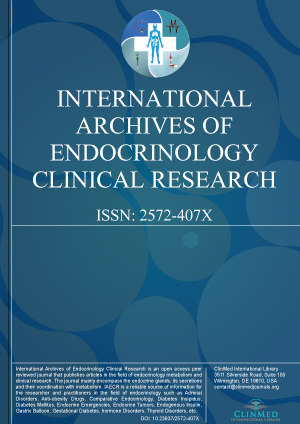Open Access DOI:10.23937/2572-407X.1510028
A Rare Case of Bullosis Diabeticorum Restricted to the Trunk
I. Hallab, H.Titou, R. Frikh, N. Hjira and M. Boui
Article Type: Case Report | First Published: December 31, 2021
Diabetes bullosis is a chronic manifestation, a specific cutaneous marker, of diabetes mellitus essentially insulindependent. It is very rare. Its etiology is still unknown. It is seen more frequently in long-standing diabetic patients commonly with peripheral neuropathy, retinopathy, or nephropathy. The lesions are usually asymptomatic. There are no specific tests for DB. The diagnosis is based on characteristic findings, clinical course, and the exclusion of other bullous disorders. Its evolut...
Open Access DOI:10.23937/2572-407X.1510027
A Large Papillary Carcinoma of Thyroid Gland
Alhad Mulkalwar, Sujay Jaju and Samir Deolekar
Article Type: Clinical Image | First Published: September 30, 2021
A 55-year-old female patient presented with a swelling in the front and sides of the neck (Figure 1) for last 1 year which was initially increasing slowly in size but for the last 5 months, the patient noticed that the swelling was rapidly increasing in size. She was complaining of dull aching pain over the swelling for last 3 months. She also complained of slight hoarseness of voice for last 2 months. She had slight difficulty in swallowing and breathing. There were no symptoms suggestive of hy...
Open Access DOI:10.23937/2572-407X.1510026
Graves Thyrotoxicosis and Cerebral Venous Sinus Thrombosis Causality or Chance Alone?
Richmond Ronald Gomes
Article Type: Case Report | First Published: September 22, 2021
Cerebral Venous Sinus Thrombosis (CVST) is a rare cerebrovascular condition accounting for 0.5-1% of all types of strokes in the general population and 12.5% of cases are considered to be idiopathic. Hypercoagulability, local bloodstream stasis, and vessel wall abnormalities may contribute to the development of this condition. The thyrotoxic phase of Graves’ disease is associated with venous thrombosis caused by hypercoagulability, which is in turn induced by increased levels of homocysteine a...
Open Access DOI:10.23937/2572-407X.1510025
U.S. Survey Investigating Gaps between Patients and Specialists in the Treatment of Severe Hypoglycemia and Impressions of the Ease-of-Use of Liquid-Stable Glucagon for Subcutaneous Injection
James M. Meyer and Mary C. Devona
Article Type: Research Article | First Published: August 20, 2021
Severe hypoglycemia is an emergency condition where very low blood sugar may lead to confusion, seizure, unconsciousness, and if left untreated, death. It has been identified as a cause for recurrent morbidity in people with either Type 1 Diabetes (T1D) or Type 2 Diabetes (T2D); however, the understanding of signs and symptoms of Severe Hypoglycemia (SH), as well as when to use glucagon, tend to vary between patients, caregivers, and adult and pediatric endocrinologists (specialists). The purpos...

